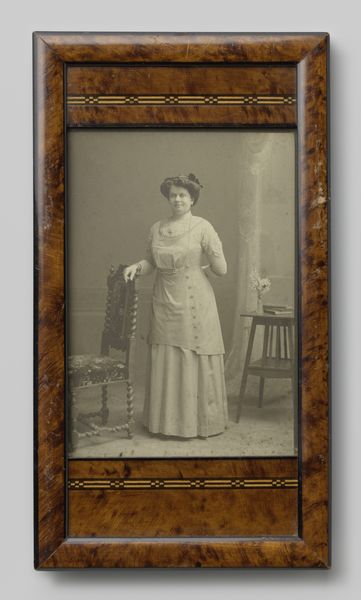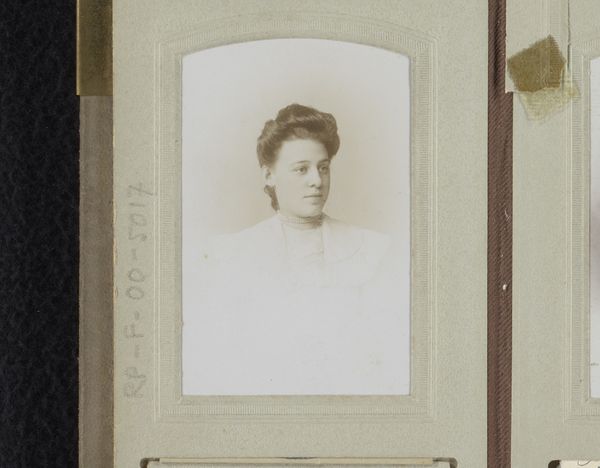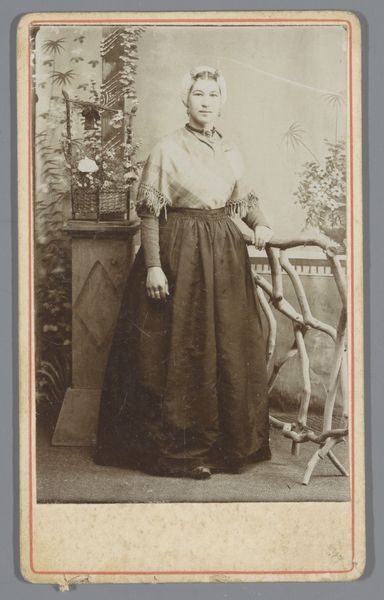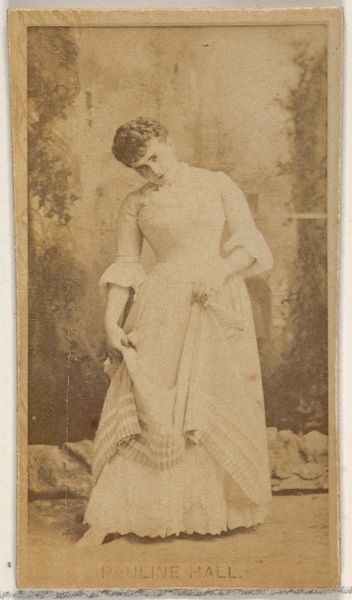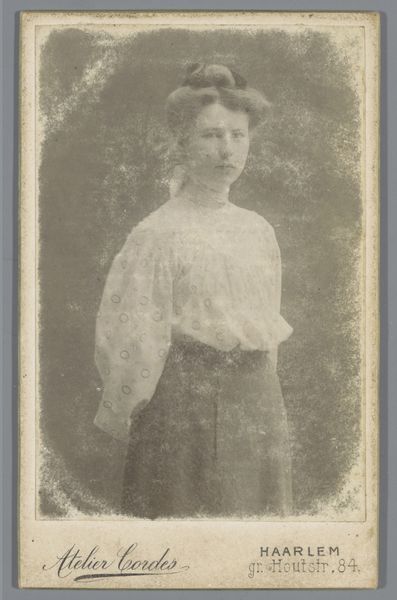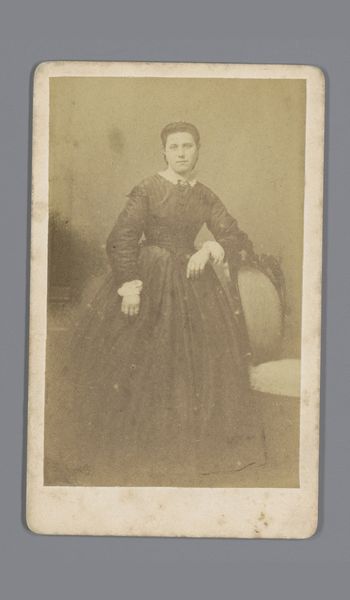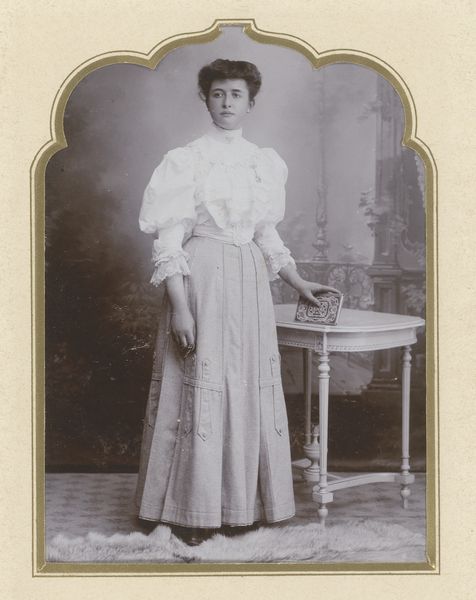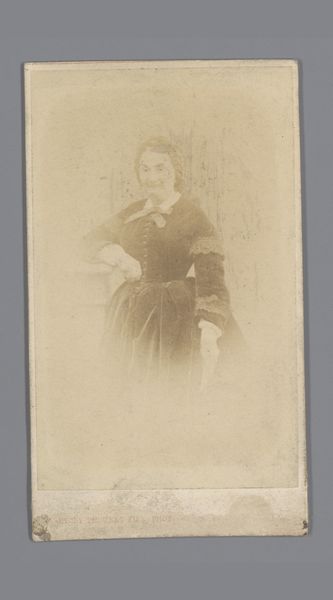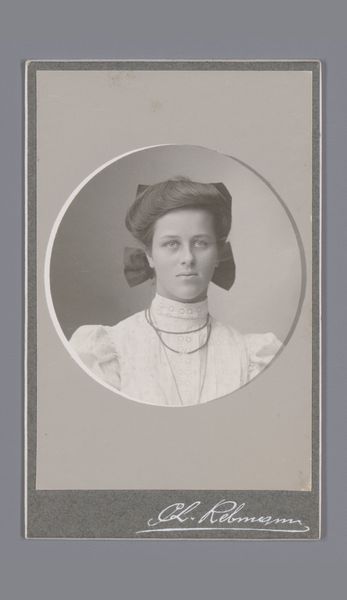
mixed-media, photography
#
portrait
#
mixed-media
#
still-life-photography
#
self-portrait
#
pictorialism
#
landscape
#
photography
#
academic-art
#
realism
Dimensions: height 178 mm, width 126 mm, thickness 10 mm
Copyright: Rijks Museum: Open Domain
Curator: Let’s turn our attention to “Portret van een onbekende staande vrouw bij een sokkel” – a portrait from the period between 1881 and 1931 by Klaas Schotsman, rendered using mixed media, primarily photography. Editor: My first impression? Austere, yet there's a grace to it. The subdued tones, the rigid posture, all give off a sense of reserved elegance. The composition has an almost geometrical appeal to me, especially that dark, vertical pedestal placed right in the left lower corner. Curator: The photograph reflects a fascinating tension of its time. The pose, with the woman standing next to what appears to be a miniature column, evokes classical portraiture. Yet, the realism enabled by photography democratized representation. No longer solely for the elite, portraiture became accessible to the burgeoning middle class, who had strong beliefs about modesty. Editor: I notice the interesting choice of framing the subject. The photographer's treatment of light is definitely pictorialist: diffuse, atmospheric. The focus is softer, and it definitely highlights textures – see the patterns on the floor and the subtle gradients of the backdrop. The composition draws my eye across the picture plane, always coming back to the woman’s face. Curator: It certainly speaks to the aspiration for social mobility, and perhaps a certain sense of cultivated taste, even if resources were not as ample. It's a careful construction, an aspirational identity performed through the photographic medium. The green and golden frame only serve to embellish its traditional aspect, fitting nicely within bourgeois culture. Editor: You're right. Thinking about the frame itself—its texture is so tactile that contrasts greatly with the smoothness of the photographic print itself, making the viewer wonder whether that contrast contributes to our reception. Curator: Perhaps it's precisely in that tension—between classical idealism and the grit of realism, that photography truly came into its own as a mode of representation and self-fashioning. Thank you, that perspective allows us to understand how deeply societal expectations are rooted in images. Editor: Indeed. It allows us to appreciate the thoughtful and delicate formal language adopted by artists from the era, bringing them closer to us today.
Comments
No comments
Be the first to comment and join the conversation on the ultimate creative platform.
